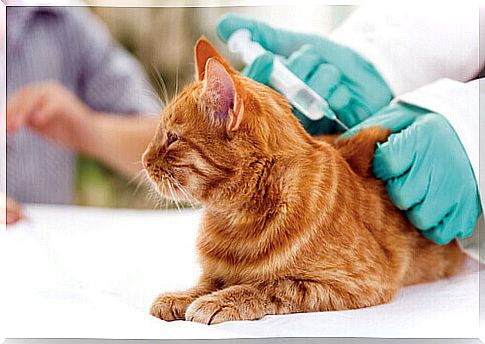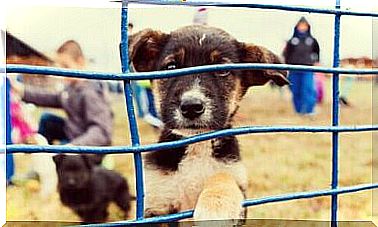All About Anger Or Hydrophobia

Rabies is a disease produced by a virus with a short incubation period and which, once infected, can be fatal. Anger or hydrophobia (fear of water) affects a wide variety of mammals, including humans, and attacks the brain and central nervous system.
The virus that generates rabies, Rhabdoviridae, can be found all over the planet, but has a higher mortality rate in Africa and Asia, continents where children and puppies are more likely to die from this disease.
Transmission
Rabies is transmitted through contact with the saliva or other secretions of an infected animal, and infection occurs in most cases through bites or scratches. Another form of contagion, although not as frequent, can be when infected saliva reaches an open wound or mucous membrane.
Once inside the body, the virus travels throughout the body until it reaches the brain, where it generates the inflammations that then produce the characteristic symptoms of this disease.
Incubation

The incubation of the rabies-producing virus varies widely. For example, it largely depends on the infected species or on the part of the body through which the virus entered the organism. According to this norm, if the virus has entered through a part of the body close to the brain, the incubation time will be shorter.
In animals of a size close to that of a dog (therefore of medium size), the appearance of symptoms usually occurs between 3 and 8 weeks from the infection. Nevertheless, there have been cases in which the incubation period of the disease proved to be quite long, reaching up to 6 months.
In cat-sized animals, symptoms occur within the first six weeks, although these data tend to be very relative as there are documented cases where the disease has delayed for up to a year to present symptoms after infection. . This phenomenon is much more common in cats than in dogs.
In the case of humans, the incubation time ranges from 3 to 6 weeks, and a longer incubation period is rare.
Dogs are the main carriers of this disease, and at the same time they are the creatures that transmit it most easily. For this reason, cases of sterilization and vaccination for both domestic and stray dogs have increased.
Symptomatology
The symptomatological picture of anger may not appear alarming at first, even if the symptoms become more severe with the passage of time, going to attack different bodily functions and the personality of the subject who suffers from it.
The symptoms are:
- Fever
- Anxiety
- Stress
- Nervous attitudes
- Excessive salivation
- Aggression
- Hyperactivity
- Lack of appetite
- Difficulty swallowing
- Paralysis
- Photosensitivity
- Wild and bewildered look
- Hydrophobia
- Self-mutilation
- Erratic movements
- Change in tone of voice
- Convulsions
Prevention, diagnosis and treatment

Normally, the only way to prevent rabies is through adequate vaccination and little exposure of healthy animals to infected animals or animals suspected of having the disease. If you have adopted a street dog, the first thing to do will be to take him to the vet so that he can rule out the presence of any diseases. You should not allow the dog to come into contact with your other pets if you have any, at least until you are completely sure that it is healthy.
Do not leave any remains of food lying around that can attract wild or stray animals into the house; when you are on the street, as soon as you spot an animal behaving strangely, the best thing to do is immediately report it to the authorities.
The only sure way to diagnose anger is by doing a brain tissue analysis. However, this will imply that the animal is already dead. Anger is diagnosed through the study of symptoms, although scientists are trying to develop techniques that are able to determine the disease when it is not already in an advanced stage.
There is no cure for rabies, and beyond prevention, once it is determined that an animal suffers from it, its fate will be death.









